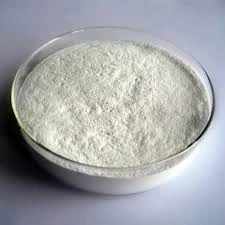
Th10 . 30, 2024 10:49 Back to list
hpmc dispersion
Understanding HPMC Dispersion A Key Component in Various Applications
Hydroxypropyl methylcellulose (HPMC) is a versatile cellulose ether that has gained significant attention in various industries due to its unique properties. One of the critical aspects of HPMC is its dispersion behavior, which plays a vital role in applications ranging from pharmaceuticals to construction materials. In this article, we will explore the characteristics, advantages, and applications of HPMC dispersion.
What is HPMC?
HPMC is a semi-synthetic polymer derived from natural cellulose. It is extensively modified to enhance its solubility in water and to improve its film-forming, binding, and thickening properties. HPMC comes in various grades, each tailored for specific applications, making it a multifunctional ingredient.
Importance of HPMC Dispersion
HPMC dispersion is crucial for ensuring uniform distribution within products. When HPMC is dispersed properly, it creates a stable gel-like texture that contributes to the overall performance of the formulation. This characteristic is especially important in pharmaceutical applications where drug delivery systems require precise viscosity and consistency. A well-dispersed HPMC can enhance the bioavailability of active ingredients, resulting in more effective therapeutic outcomes.
Advantages of HPMC Dispersion
1. Stability and Clarity One of the primary benefits of HPMC dispersion is its ability to provide a clear and stable solution. Unlike some natural gums that may cause cloudiness, HPMC maintains transparency, making it ideal for applications such as cosmetics and personal care products, where aesthetics matter.
hpmc dispersion

2. Temperature Resistance HPMC exhibits thermal stability and can maintain its dispersive properties across a range of temperatures. This feature is particularly beneficial in hot-fill processes used in food applications, allowing manufacturers to create products without compromising quality.
3. Water Retention In construction materials, HPMC’s water-retention properties prevent rapid drying of mortars and plasters, allowing for better workability and adhesion. This property is essential for ensuring the longevity and durability of construction projects.
4. Biodegradability As a cellulose derivative, HPMC is biodegradable, making it an eco-friendly option compared to synthetic polymers. This characteristic appeals to industries aiming to reduce their environmental impact.
Applications of HPMC Dispersion
The applications of HPMC dispersion are vast and varied
- Pharmaceuticals Used in formulations such as tablets, capsules, and hydrogels to improve drug release characteristics and enhance viscosity. - Food Industry Utilized as a thickening agent, emulsifier, or stabilizer in various food products, including sauces and dressings. - Cosmetics and Personal Care Found in lotions, creams, and gels to enhance texture, stability, and skin feel. - Construction Employed in cement-based products, tiling adhesives, and paints to improve workability and adhesion.
Conclusion
In summary, HPMC dispersion is a vital component across multiple industries. Its unique properties—such as stability, temperature resistance, water retention, and biodegradability—make it an invaluable material in the formulation of safe, effective, and aesthetically pleasing products. As industries continue to seek innovative solutions, the role of HPMC dispersion is likely to grow, driving advancements in product performance and sustainability.
-
The Widespread Application of Redispersible Powder in Construction and Building Materials
NewsMay.16,2025
-
The Widespread Application of Hpmc in the Detergent Industry
NewsMay.16,2025
-
The Main Applications of Hydroxyethyl Cellulose in Paints and Coatings
NewsMay.16,2025
-
Mortar Bonding Agent: the Key to Enhancing the Adhesion Between New and Old Mortar Layers and Between Mortar and Different Substrates
NewsMay.16,2025
-
HPMC: Application as a thickener and excipient
NewsMay.16,2025
-
Hec Cellulose Cellulose: Multi functional dispersants and high-efficiency thickeners
NewsMay.16,2025







